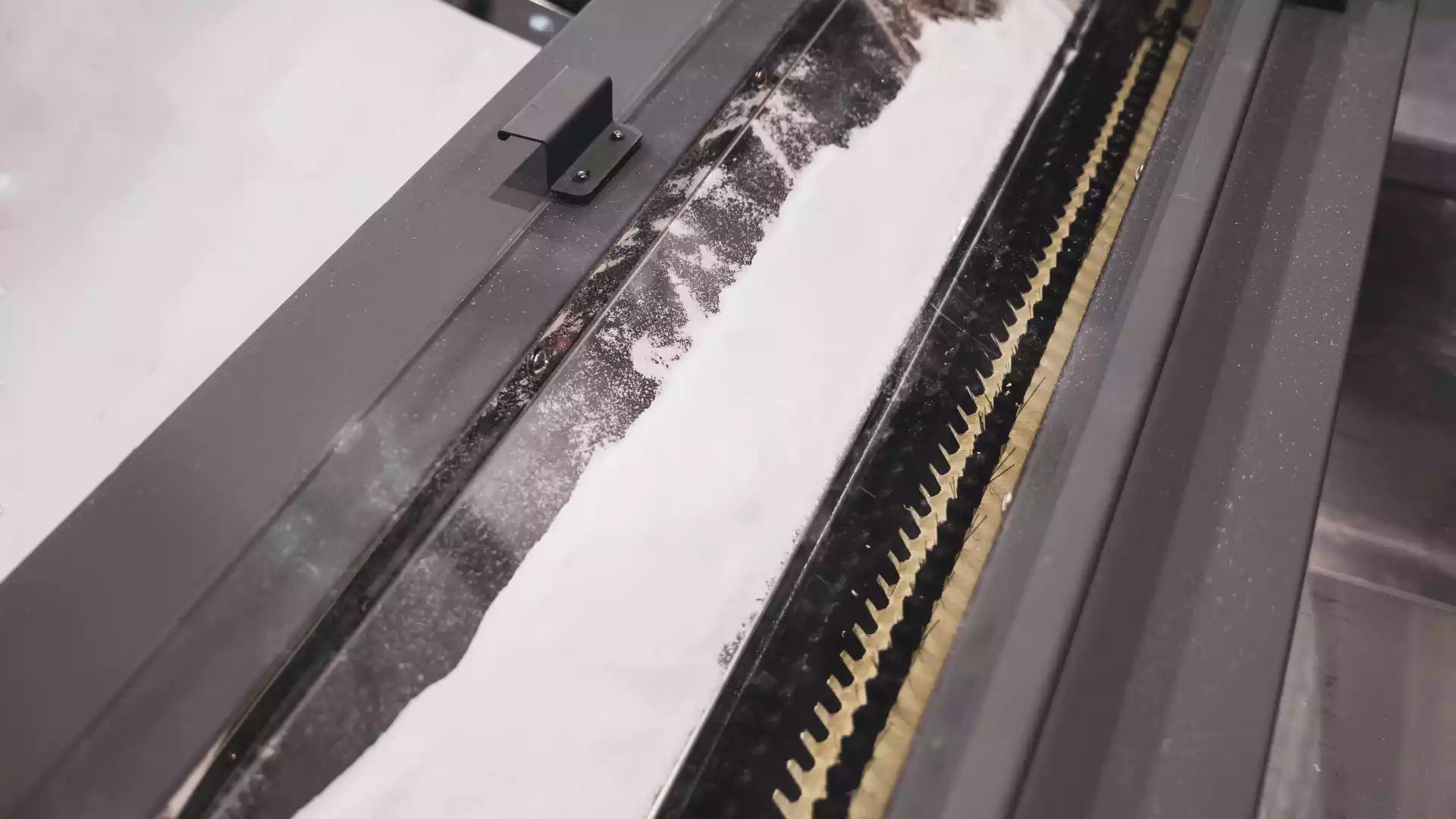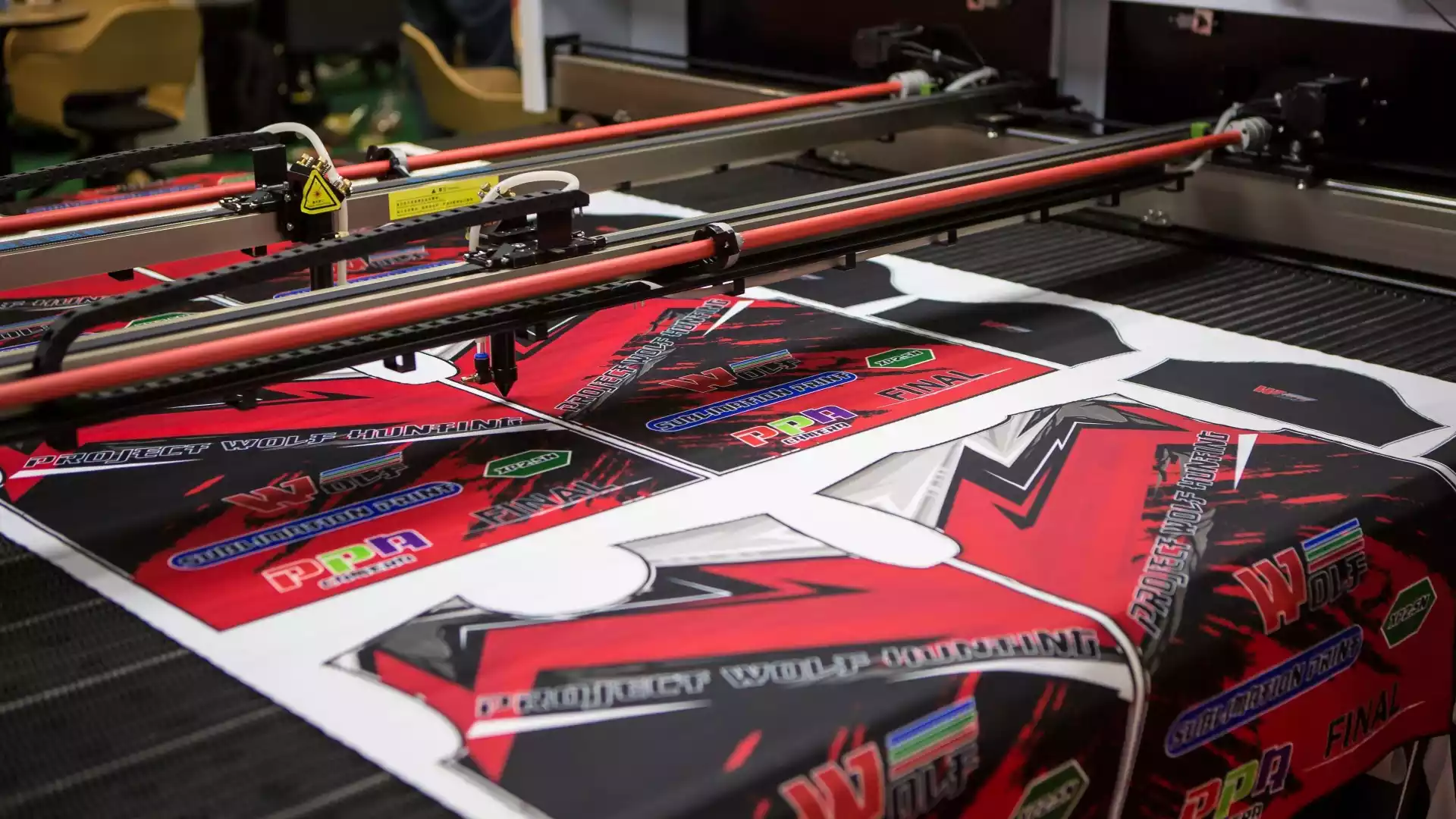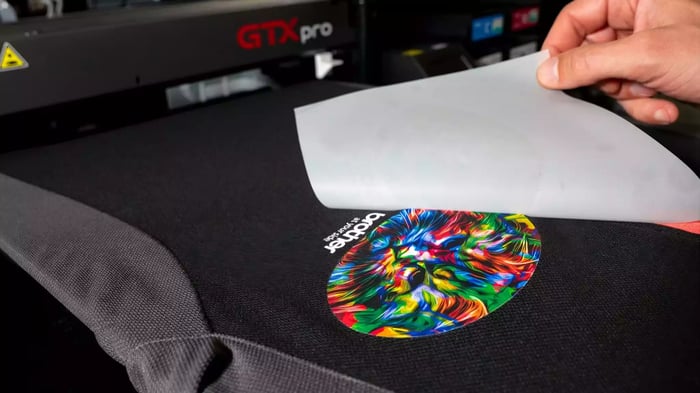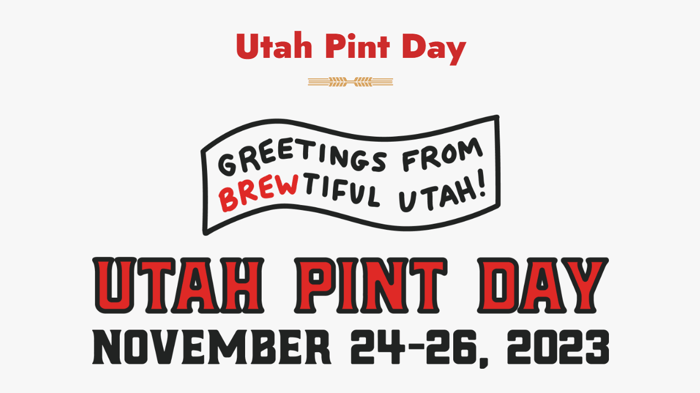Intro to DTF Printing
Printing has changed a lot over the years. It used to be all about screen printing, but now there are many new print methods, like DTG (Direct to Garment) and dye sublimation printing. These methods have made printing way more versatile and efficient.
But now a new technique is shaking things up. It's called DTF Printing or Direct to Film.
What is DTF Printing?
DTF (Direct to Film) printing is a method where designs are printed onto a special film and then transferred onto various materials using a heat press. This innovative technique allows for vibrant, high-quality prints on a wide range of fabrics, including cotton, polyester, and blended materials, making it highly versatile in the custom printing industry.
The benefits of DTF Printing are essentially overcoming many of the challenges and restrictions associated with current print methods - especially apparel printing..
Understanding DTF Printing
Direct to Film (DTF) printing, a term that is rapidly gaining momentum in the printing world, represents a significant leap in printing technology. At its core, a DTF print involves printing a design onto a specialized film using a DTF printer, which is then transferred onto a variety of materials, including textiles, using a heat press. This process stands out for its versatility, allowing for vibrant and detailed prints on a myriad of fabric types, from cotton and polyester to more challenging blends.
Unlike traditional inkjet or laser printers, DTF printers use a unique combination of textile inks and white ink, which ensures that colors pop on both light and dark fabrics, making the design more pronounced and visually appealing.
When compared to other popular printing methods like DTG (Direct to Garment), screen printing, and sublimation printing, DTF printing offers several distinct advantages. For instance, unlike DTG printing, which is primarily effective on cotton materials, DTF excels on a wider range of fabrics, including synthetics. This versatility gives it an edge in the custom printing industry, particularly for businesses like CustomStickers.com that aim to cater to a diverse clientele.

What's more, DTF outshines screen printing in its ability to create intricate designs with ease and precision, without the need for separate screens for each color. This not only streamlines the printing process but also reduces costs and production time. In comparison with sublimation printing, which is limited to polyester and similar materials, DTF's capability to print on a broader spectrum of fabrics, including dark colors, positions it as a more adaptable and efficient printing method. The DTF process also offers a softer hand feel and greater durability, ensuring that the prints withstand wear and tear better than some traditional printing methods.
The DTF Printing Process Explained
The DTF (Direct to Film) printing process is a meticulously crafted sequence of steps, each contributing to the final high-quality print.
-
Preparing the Film and Powder Adhesive:
-
Design Preparation: Using RIP software, a design is created and optimized for print resolution and color accuracy.
-
Film Printing: The design is printed onto a PET film by a DTF printer. The printer first lays down a white ink layer, crucial for color vibrancy on dark fabrics, followed by the full-color image using CMYK textile inks.
-
Applying Powder Adhesive: After printing, a hot melt adhesive powder, specifically designed for DTF printing, is evenly applied to the wet ink. This adhesive is essential for binding the print to the fabric.
-
-
Heat Press Process:
-
Pre-pressing the Fabric: The fabric, whether a t-shirt, polyester garment, or a cotton blend, is pre-pressed using a heat press machine to remove moisture and ensure a smooth surface.
-
Transferring the Design: The printed film, now coated with adhesive powder, is placed on the fabric. The heat press machine is then used to transfer the design from the film to the fabric. This step typically occurs at temperatures around 165°C, lasting 15 to 20 seconds.
-
-
Finalizing the Print:
-
Peeling the Film: After the heat transfer, the film is carefully peeled off. This step can vary depending on whether a cold-peel or hot-peel DTF film is used.
-
Post-pressing: Finally, the garment is placed back in the heat press for a few seconds. This post-pressing step ensures the durability of the print, enhancing its wash resistance and overall quality.
-

What is DTF Print Powder?
DTF Print Powder, also known as adhesive powder, is a key component in the Direct to Film (DTF) printing process. Applied to the printed film, this powder acts as a glue, ensuring that the ink firmly adheres to the fabric during heat pressing. It is essential for achieving durable, high-quality transfers in DTF printing, enhancing both the longevity and vibrancy of the printed designs.
DTF Printer Technology
DTF (Direct to Film) printer technology represents a significant evolution in the printing world, setting itself apart from traditional inkjet and laser printers. Unlike standard printers that deposit ink directly onto paper or fabric, DTF printers are designed to print onto a special film. This film is then used to transfer the design onto various materials, including textiles.
What makes DTF printers stand out is their ability to handle a range of fabrics – a task challenging for most desktop inkjet printers and almost impossible for laser printers.
A key component of DTF technology is the specialized DTF printer ink. This ink is formulated to ensure maximum vibrancy and durability of the prints. Notably, the use of white ink is a game-changer. Acting as a base layer, the white ink enhances the brightness and vividness of colors on darker fabrics, something that is hard to achieve with other printing methods like DTG or screen printing.
RIP (Raster Image Processor) software plays an indispensable role in DTF printing. This software goes beyond standard printing tasks, managing intricate aspects like print resolution and color gamut. RIP software ensures that each drop of ink is precisely placed and that colors are reproduced accurately, crucial for high quality prints.
This software's ability to fine-tune the balance of white and CMYK inks is essential for achieving the desired look, whether it's a vibrant graphic on a t-shirt or a detailed pattern on a polyester blend.
Materials and Tools in DTF Printing
Direct to Film printing uses a unique blend of materials and tools to achieve its outstanding results.
-
DTF Film: The backbone of the DTF process is the DTF film, a special PET film designed to accept and hold the ink before transfer. Its surface is treated to ensure that the inks adhere properly and are then smoothly transferred onto the fabric.
-
Adhesive Powder: After printing the design onto the film, a crucial step involves the application of adhesive powder. This can be either hot melt adhesive powder or a regular adhesive powder. The powder sticks to the wet ink and, once heat-pressed onto the fabric, ensures the design bonds firmly to the material, enhancing durability.
-
Heat Press Machine: The heat press plays a pivotal role in DTF printing. It's used not just to transfer the ink and adhesive from the film to the fabric but also to cure or set the adhesive, ensuring that the print is permanent. The precise temperature and pressure settings of the heat press are key to achieving optimal transfer and durability.
-
Desktop Inkjet Printer Adaptations: Interestingly, DTF printing has adapted traditional desktop inkjet printers to fit into this innovative process. These printers are modified to handle DTF inks and films, making DTF printing accessible and efficient for various scales of printing needs.
The Versatility of the DTF Printing Process
DTF printing is like a Swiss Army knife in the world of printing – it’s super versatile and can handle a lot of different jobs.
-
Works on Many Materials: DTF isn’t picky about what it prints on. Whether it’s a comfy cotton hoodie, a sleek polyester sports jersey, or a mix of both, DTF can handle it. This means we can make a whole bunch of different things, like t-shirts, hoodies, and even those trendy athleisure wear items that everyone loves.
-
Great for Custom Jobs: We love using DTF because it lets us say ‘yes’ to all sorts of custom printing requests. Got a cool design for a t-shirt? We can print it. Want your logo on a bunch of different fabric types? No problem. DTF makes it easy to get vibrant, detailed prints on a variety of items.
-
Perfect for T-Shirts and More: T-shirt printing is a big deal for us. Whether you want a single shirt or a bunch for your team or event, DTF printing makes sure they all look fantastic. The colors come out bright and the details are super sharp. Plus, these prints are tough – they can handle a lot of washes without fading or peeling.
In short, DTF printing is awesome because it’s flexible, it works on many materials, and it’s great for all kinds of custom printing projects.
DTF Versus Other Printing Methods
When you think about printing, there are quite a few ways to do it. DTF (Direct to Film) printing is one of the newer kids on the block, and it’s got some cool advantages over other methods like DTG (Direct to Garment), screen printing, and sublimation printing. Let’s see how they stack up.

-
DTF vs. DTG Printing: DTG is like using a high-tech spray paint directly on the fabric. It’s great for cotton but struggles with polyester and dark fabrics. DTF, on the other hand, works on almost any fabric and color. It’s like a universal printer for all your fabric needs!
-
DTF vs. Screen Printing: Screen printing is the old school method where ink is pushed through a mesh screen onto the fabric. It’s cool for simple, bold designs but gets tricky with lots of colors and details. DTF doesn’t sweat the small stuff – it prints complex designs with ease, no mesh screens needed.
-
DTF vs. Sublimation Printing: Sublimation is all about turning ink into gas and fusing it with the fabric, which sounds super sci-fi but only works on polyester. DTF is more down-to-earth and prints beautifully on a wide range of materials, not just polyester.
Now, every method has its pros and cons:
Pros of DTF:
DTF is super versatile – it prints on almost any fabric, the colors are vibrant, and the details are crisp. Plus, the prints are durable; they don’t crack or fade easily, which is a big win.
Cons of DTF:
The downside? The print area feels a bit more noticeable on the fabric compared to some other methods. And while the colors are great, they might not be as bright as what you get with sublimation on polyester.
In a nutshell, DTF printing is versatile, works on a bunch of different materials, and gives you bright, detailed prints.
The Future of DTF in the Printing Industry
The future of DTF (Direct to Film) printing in the custom printing market looks brighter than ever. As a leading method in the printing business, DTF is making waves for its flexibility and quality. It's not just a trend; it's becoming a staple, especially for businesses like CustomStickers.com that value versatility and top-notch print quality.
Growth in the Custom Printing Market:
DTF is set to grow big. More and more printing businesses are seeing the benefits of DTF printers. They're not just for t-shirt printing anymore. DTF's ability to print on various materials is opening doors to new products and markets. From custom t-shirts to unique fabric designs, the possibilities are endless. This means we'll likely see a rise in businesses offering DTF prints and even more innovative uses of this technology.
Impact on Printing Methods:
DTF printing is changing the game. It’s challenging traditional methods like screen printing and DTG (Direct to Garment) printing. With its no-fuss setup, lower printing costs, and ability to print vibrant designs on diverse materials, DTF is becoming the go-to print method. Plus, the quality of DTF prints is top-notch. They’re durable, detailed, and have great color depth – a combination hard to beat.
Predictions for the Future:
Looking ahead, DTF is predicted to revolutionize the printing industry. It's not just about what you can print, but how you print. The ease of use, combined with the reduction in excess materials (like transfer paper and heat transfer vinyl), makes DTF a more sustainable choice. We might also see advancements in DTF printer technology, making it even more efficient and accessible for all kinds of printing businesses, from small startups to large-scale operations.
DTF is not just a passing trend – it's setting the stage for the future of printing. It offers a combination of quality, versatility, and efficiency that’s hard to find in other printing methods. For many print companies, adopting DTF means staying ahead in the custom printing industry and offering our customers the best in printing technology.
CustomStickers.com and DTF Printing
CustomStickers.com, a pioneer in the custom printing market, has embraced this cutting-edge technology, integrating DTF printing into our diverse range of services. Recognizing the unique benefits of DTF, such as its versatility in printing on various materials including polyester, cotton blends, and even challenging surfaces, we have positioned ourselves at the forefront of this technological wave.
With DTF printers, we are implementing advanced printing powder, specialized DTF printer ink, and heat press mechanisms to produce prints that are not only visually stunning but also durable and adaptable. By incorporating DTF into our service offerings, CustomStickers is committed to delivering unparalleled print quality and innovation, catering to an ever-growing demand for customized, high-quality prints in the modern printing landscape.
Final Thoughts
As we’ve explored in this article, DTF (Direct to Film) printing is not just another printing method; it's a revolutionary approach that's reshaping the landscape of the custom printing industry. Its versatility, efficiency, and quality make it a standout choice.
DTF's ability to print on a wide range of materials, from cotton and polyester to more unique fabric blends, means that it’s perfect for various projects - be it a single custom t-shirt or a large batch of diverse garments. The technology behind DTF printing, from specialized DTF printers and inks to the crucial heat press process, ensures that every print is vibrant, detailed, and long-lasting.
Looking ahead, the future of DTF printing is incredibly promising. It's poised to grow and evolve, bringing new possibilities and efficiencies to the printing business. As it becomes more integrated into the custom printing market, we can expect to see even more creative and innovative applications of this technology.






